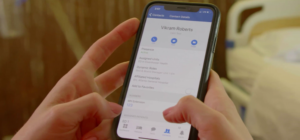The healthcare industry has seen an alarming increase in staff turnover rates in recent years. According to recent data, employee turnover jumped to over 17 percent in 2019, and nearly a quarter of nurses will leave their job before a year is out.
Such high attrition rates can mean more for hospitals than sunken investment in recruiting. For your hospital’s IT team, the turnover can mean countless hours spent manually adding and removing users from various databases in order to ensure access to the right systems and security of confidential data. This form of user management can be so demanding and urgent that it requires one or multiple full-time employees to manage.
Plus, if your hospital uses one of the larger EHRs to manage users, your IT department is likely looking at staffing an entire team to keep the system updated with user changes. Even for larger hospitals and health systems, this shakes out to be a massive drain on IT resources that could be better spent on other, more proactive initiatives.
An Automated Solution
At Mobile Heartbeat, we’re more familiar with this problem than we’d like to be. As an enterprise-wide communication platform, we are built to support every type of role and every employee across the entire organization. We see every user who joins and leaves the system, so we started looking into how we can help our customers with this user management challenge. Earlier this year we rolled out our Active Directory Synchronization capability, to make it easier for administrators to add new users and remove defunct ones from MH-CURE’s enterprise directory. This certainly helped those of our customers that already used an Active Directory system, but what about those tech teams that use their EHR directory or an external management system as the single source of truth for their enterprise?
We realized that, even with the prevalence of Active Directory, our partners in IT have to manage directories in multiple systems within their hospital. Beyond the EHR, directories within telephony and PBX systems, nurse call and clinical communication platforms all need to be up to date in order to maintain security and work at an optimal level.
That’s why we developed a brand new user management API to add to our CURE Connect API program. While our existing APIs enable inbound alerts and real-time care team information, this new interface allows administrators to pull directory data from any existing software they have, whether it’s the EHR, nurse call, telephony or anything else. Gone are the days of manually adding users to, updating and removing users from MH-CURE. Now, when your Active Directory gets updated, or you make changes to your EHR directory, those user changes are automatically reflected in MH-CURE.
Optimizing Resources
There are several important benefits to this. By making it easier than ever to keep directories up to date, hospitals can mitigate security risks associated with user management. For instance, if a bring-your-own-device user leaves the hospital, but their account is not terminated, they may still be able to access protected patient and employee information, thus exposing the hospital, staff and patients to risk. If user permissions can be automatically updated, that risk dissipates.
It also minimizes chances of a breakdown in communication caused by slow user management. Communication within a healthcare setting is often rapid and urgent—for this reason, much of the value of a communication platform comes from being able to reach the right person, first. At Mobile Heartbeat, we believe that a communication system is only as valuable as the number of people you can reach with it.
In fact, Metcalfe’s Law states that the value of a telecommunications network increases exponentially as you continue to add users. Making sure that new users are added in a timely manner, with minimal impact on the bandwidth of the IT team, is a great way to maximize value of a communication platform.
One-Size-Fits-All Interoperability
Finally, by building to our user management API you can boost your hospital’s interoperability and help unify any disconnected systems you’re using. MH-CURE will consume data from multiple systems and synthesize it to display the most up-to-date information about a user. In addition to EHR, nurse call and telephony user management, use cases include any existing system or software that has a built-in directory function, so that your hospital’s source of truth is reflected throughout.
Additionally, we can use that data to be the source of truth for other tools or systems that need this directory data but don’t have the ability to interface with each of the many systems we are consuming from. The API uses standard RESTful protocols and OAuth 2.0 to manage request access, so your IT team can feel comfortable interoperating with as many programs as they see fit.
With how volatile staff turnover can be, it doesn’t make sense for IT administrators to continue wasting resources by manually adding, updating and removing users from hospital directories. With the new user management API, hospital administrators can rest assured that their system directories are secure and up to date across the entire organization.




